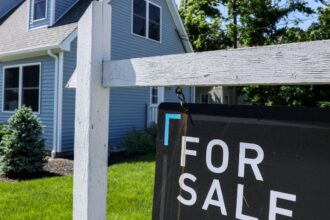Remote work flourishing in the early days of the pandemic removed boundaries for many workers, driving people to move to lower-cost cities.
Charlotte, Providence and Indianapolis are among some of the cities that saw the highest number of people moving in, according to a Zillow study.
Unaffordable housing was the main factor that contributed to these moves, as rent and mortgage payments hit record-highs in 2023.
Some of the largest — and most expensive — cities in the country have seen an outflux of people since the beginning of the pandemic. Chicago, San Diego and Cincinnati all saw a high number of people leaving for less expensive metro areas.
Those who relocated saw the profit in doing so. Individuals and families that moved to other states in 2023 saved an average of $7,500 on homes, according to another Zillow study.
“Affordability is one of the biggest considerations for homebuyers and sellers, and clearly plays a major role in deciding where to put down roots,” Zillow Senior Economist Orphe Divounguy said. “Housing costs hit record highs last year, and made both buying and selling difficult, even for homeowners sitting on massive equity. Finding a less expensive area where dollars aren’t quite so stretched was a smart move for a lot of people.”
For those moving to lower-cost states, looking for a mortgage, Credible lets you view multiple mortgage lenders and provides you with personalized rates within minutes, all without impacting your credit.
INFLATION INCREASED TO 3.4% IN DECEMBER – HERE’S WHAT THAT MEANS FOR MORTGAGE RATES
Homeownership is still unaffordable for many
With inflated prices and low inventory, homeownership has grown unaffordable for a majority of the U.S.
Housing prices in 29 states aren’t affordable compared to the median household income in the area, according to an S&P Global Market Intelligence report. This is the first time a majority of the country has faced below-average affordability.
The top three least affordable states on S&P’s list are Hawaii, California and the D.C. area. Nearly all states have seen an effect on their housing affordability, though. S&P’s index found that nearly all state’s affordability has fallen between 35% and 45% since the beginning of the pandemic.
The middle of the U.S. keeps its place as the most affordable. Even there, the median household income just barely meets the income necessary to afford a home.
If you’re in the market for a home loan, consider using Credible to help you easily compare interest rates from multiple lenders in minutes.
73% OF AMERICANS STILL HAVEN’T BOUNCED BACK FINANCIALLY FROM THE COVID-19 PANDEMIC
Certain generations are opting to rent over buy
While homeownership remains out of reach for many, younger generations are opting to avoid it altogether.
Renting has become more of a norm for Gen Z and millennials. 52.7% of millennials own a home at age 34, compared to 57% of Gen X and 58.9% of baby boomers when they were the same age, an article reports.
Even those among these younger generations with incomes that could easily afford them a house often opt to rent over buy. GID, a real estate investment firm that owns about 50,000 apartment units in 30 different markets, reports that almost a quarter of its residents make more than $200,000 annually.
“Not an income you typically would have associated with a renter versus homeowner, but that is increasingly the case today,” GID Chief Executive Greg Bates said.
There’s still benefits in owning a home, and if you’re looking to secure the right mortgage for your purchase, Credible offers an easy way to compare your potential rates. You can visit an online mortgage broker like Credible to compare rates, choose your loan term and get preapproved with multiple lenders.
GEN Z IS WORRIED THEY’LL NEVER RETIRE, BUT MORE SAVE FOR RETIREMENT THAN ANY OTHER GENERATION
Have a finance-related question, but don’t know who to ask? Email The Credible Money Expert at [email protected] and your question might be answered by Credible in our Money Expert column.
Read the full article here








